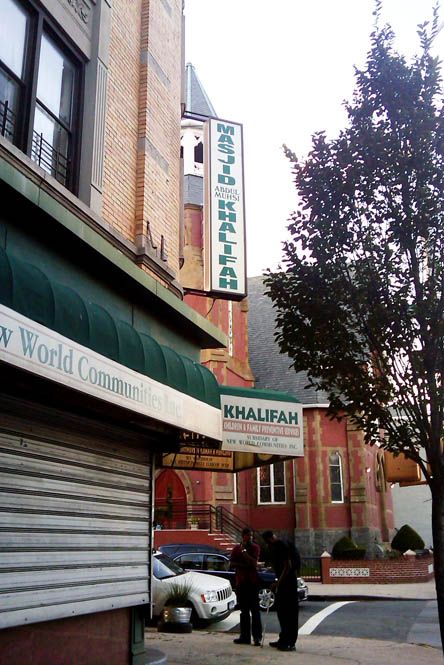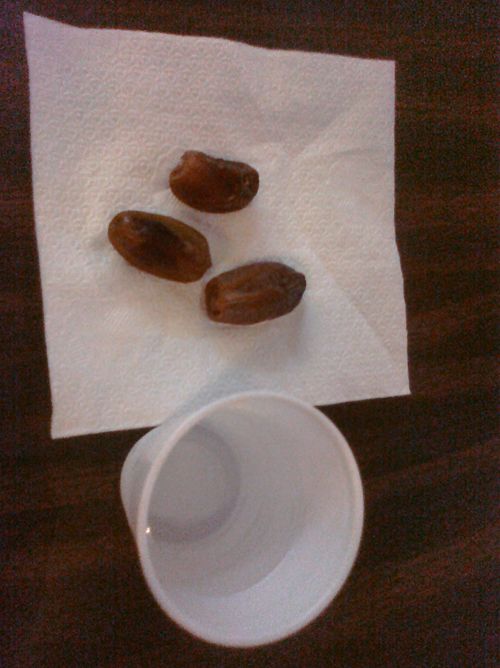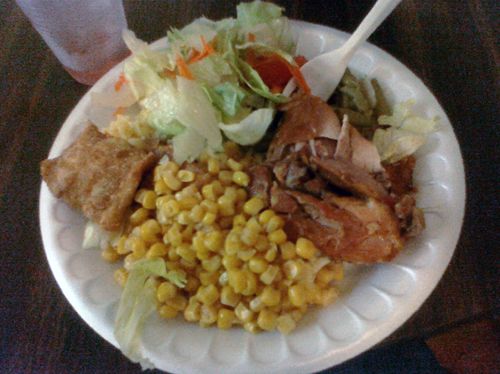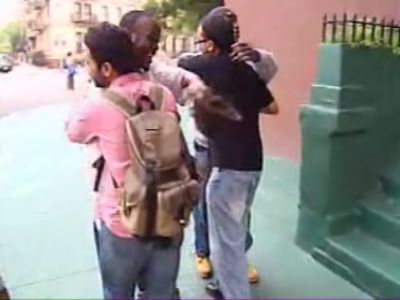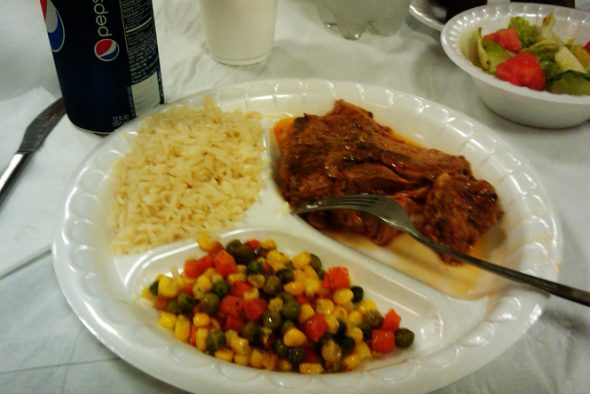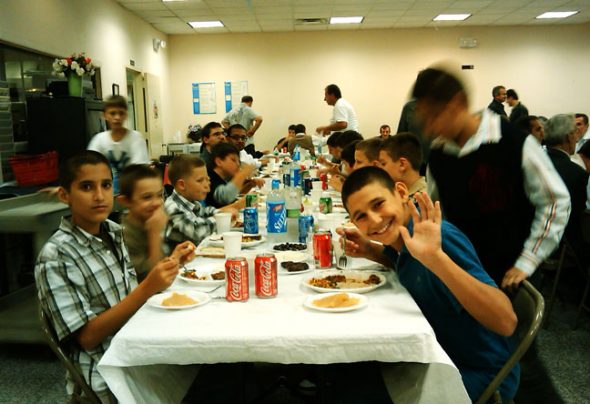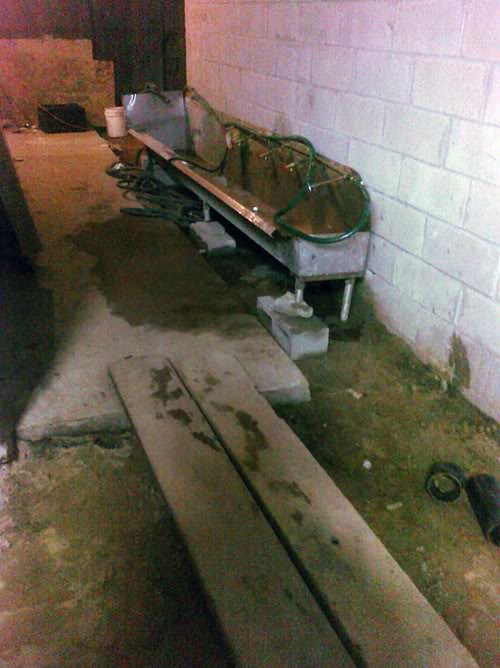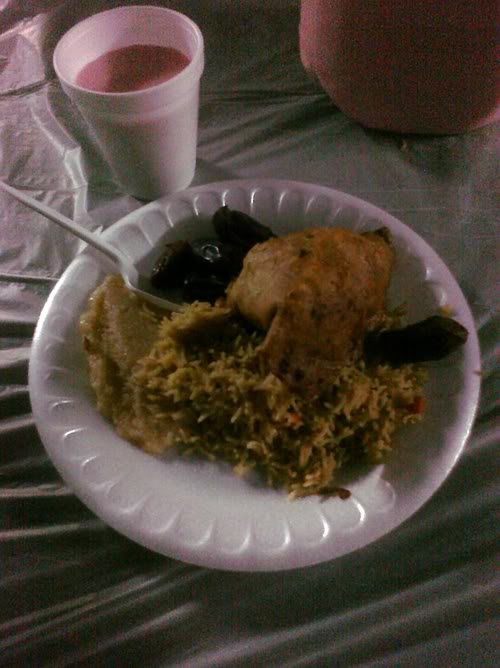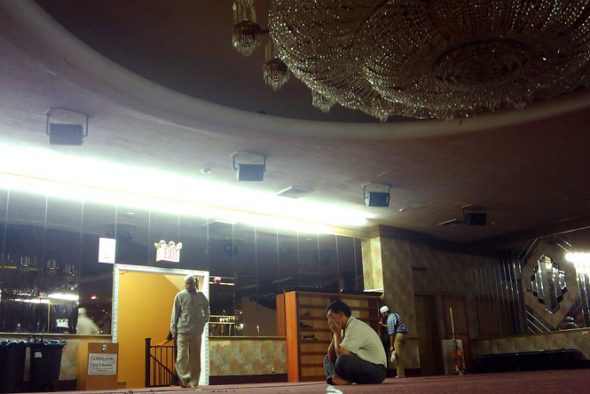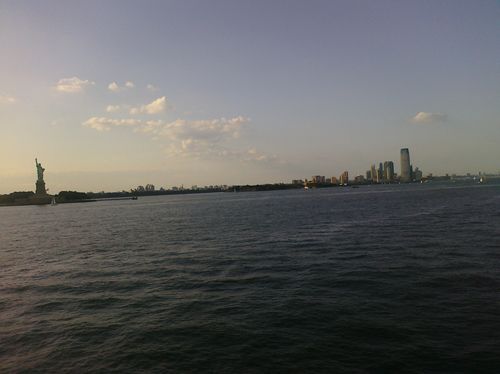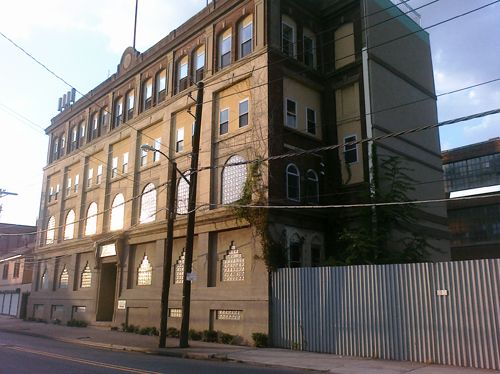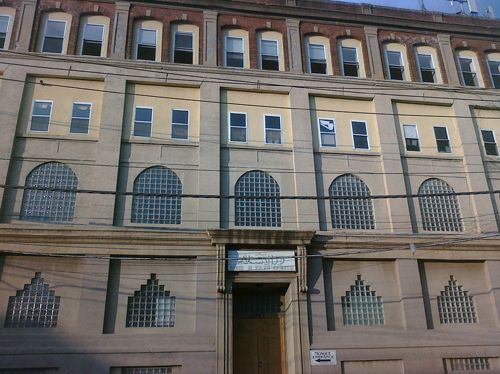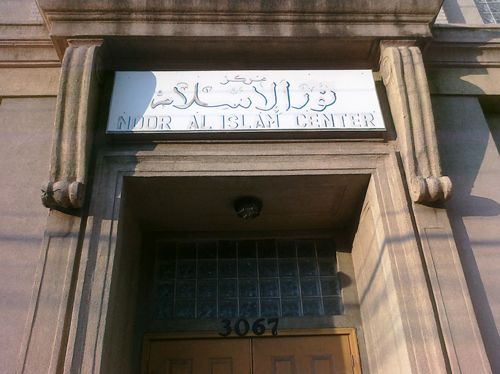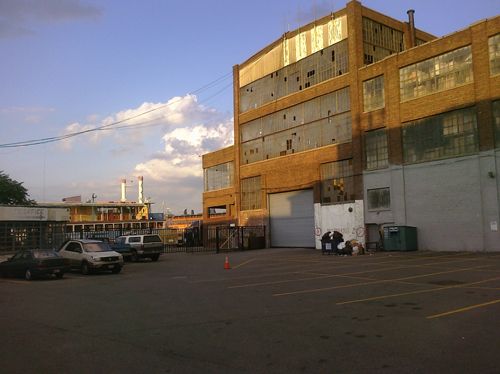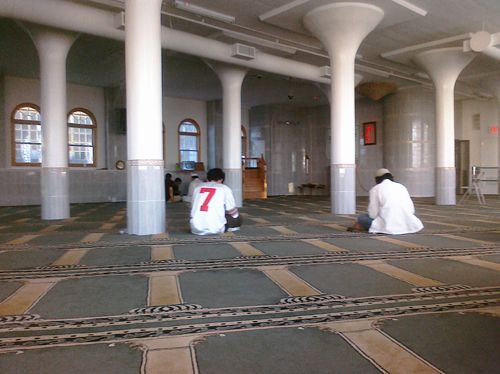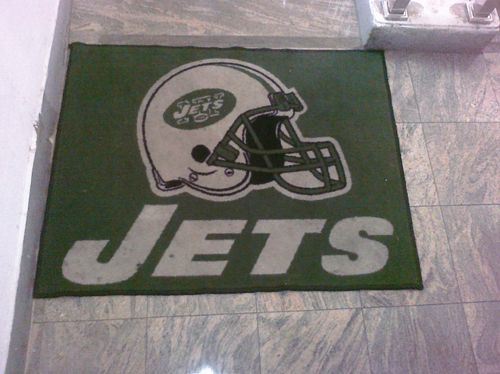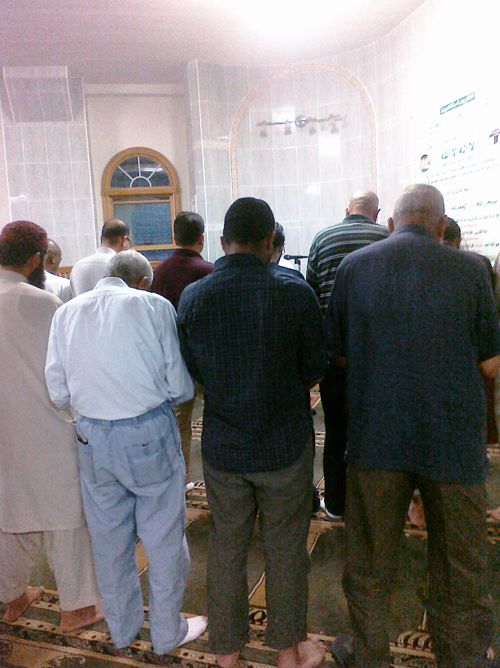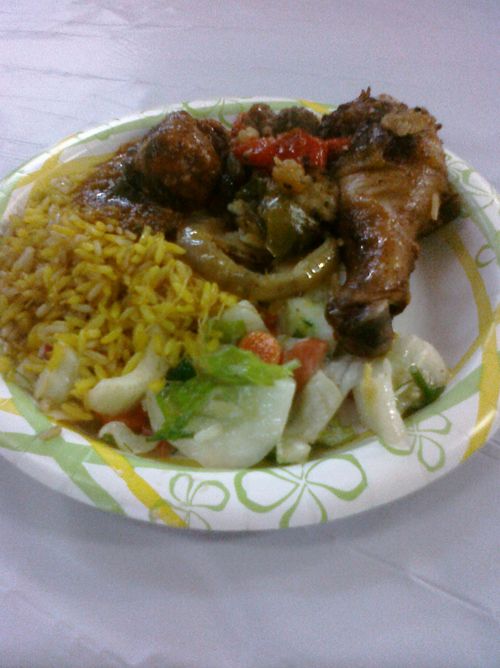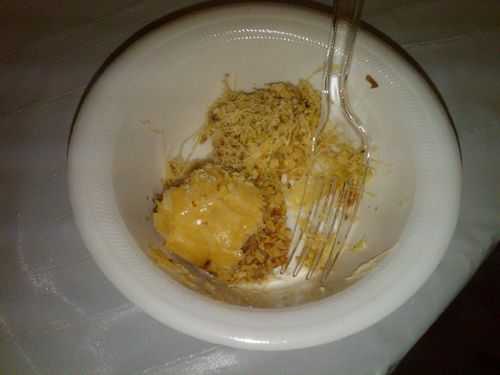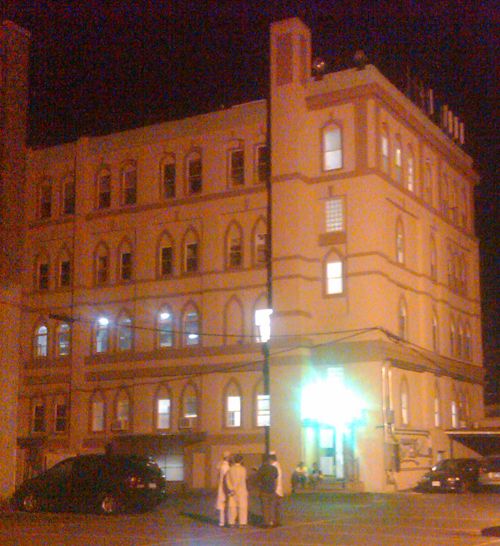Tonight, Bassam and I went to Brooklyn to visit one of New York’s finest mosques, Masjid At-Taqwa. This is the mosque of Imam Siraj Wahhaj, one of the US’ leading Muslim scholars and also one of the most sought after public speakers. I’m sure anyone who has met Imam Siraj has a story about how he impacted his/her life, but for me, he’s one of the people that mentored me as I pursued a career in standup comedy.
http://bassamtariq.com/30days/taqwa/masjid.jpg
One of the things I like about Imam Siraj is any time you meet him, a little bit of his kindness and goodwill rubs off on you. Just being around him makes you feel like a better person. I felt that a lot tonight when Bassam and I hung out with the congregants in the mosque.
http://bassamtariq.com/30days/taqwa/wait.jpg
The food we broke our fast with hit very close to home for me. In my teenage years, I spent a lot of time with Muslim groups that identify themselves as Tabligh Jammats. They are Muslims that travel around the country encouraging other Muslims to get more involved in their religion and local mosque activities.
Many Muslims often criticize the practices of Tabligh Jammat, but I can only speak from my own experiences- and they were all positive. The people I met on Tabligh Jammat were strangers that made me feel welcome during a time in my life I was confused about what my purpose in life was.
But anywho, the reason why the food hit close to home for me was because we had bread with cream cheese and honey out of a shared plate. It’s something we ate just about every day while on these Tabligh Jammat trips.
To many people, understandably so, it might be a culture shock to see 3-4 people eat with their hands out of the same plate. It’s a tradition that dates back to Prophet Muhammad’s (peace be upon him) time. It’s amazing how quickly one plate of food brings strangers together, regardless of who they are or where they come from. Tonight was that case. I was sitting far away from the plate of cream cheese and honey, and had trouble reaching over.
http://bassamtariq.com/30days/taqwa/outofreach.jpg
The brother sitting next to me immediately noticed me reaching and encouraged me to move in closer. His name was Muhammad, he and the other people sitting there made sure I was comfortable and asked if I had everything I wanted. I didn’t even uttered a word, but they treated me like royalty. Within minutes we were all cracking jokes and having a blast.
Before we knew it, our plate was empty, but our spirits were anything but.
http://bassamtariq.com/30days/taqwa/inreach.jpg
It was then time to pray. The congregation here is a healthy mix of African Americans, Caribbean Islanders and Bengalis. Imam Siraj Wahajj was not there tonight, but the imam who led us tonight also had a soothing recitation. As you can see, it was a packed house, even for a Wednesday night.
http://bassamtariq.com/30days/taqwa/musala.jpg
http://bassamtariq.com/30days/taqwa/kufi.jpg
http://bassamtariq.com/30days/taqwa/beard.jpg
The lines for dinner were fairly long, but I don’t think it mattered to anyone how long they were. Bassam and I were perfectly content waiting in line shooting the breeze about the happenings of the day. The volunteers definitely deserve shoutouts for patiently serving such a large group of people.
http://bassamtariq.com/30days/taqwa/serving.jpg
Considering Masjid At-Taqwa is one of the most well-known mosques in the entire country, best believe they come just as correct with their food. Tonight for dinner we had a nice mix of soul and island food. I had lo-mein, baked macaroni, potato salad, cornbread, baked chicken and couscous. The couscous was really good, they put in all sorts of cranberries and raisins to give it a zesty zing.
http://bassamtariq.com/30days/taqwa/soulfood.jpg
After dinner, we briefly hung out with some of the brothers in the mosque and then visited Abu’s Bakery, which is next door to the mosque. The owner, Idrees, said it’s very common for his bakery to be the hang out spot for Muslims once prayers are done next door. Bassam and I have both heard wonderful things about the sweets here (especially the bean pie), but both of us were way too full to even think about food. Definitely a place to visit next time we’re in the neighborhood though.
http://bassamtariq.com/30days/taqwa/abu.jpg
What Imam Siraj Wahajj and his congregation have built here in New York is definitely a shining example for the American Muslim community. There’s a reason why people flock from all over the five boroughs to his mosque. When I first moved to NY, I would spend almost 2 hours on the subway from my apartment in the north Bronx all the way down to his mosque.
I can’t speak for the other people who come here, but what always draws me to this mosque is its breathtakingly friendly atmosphere. You step inside this place and you feel so welcome, it’s almost intoxicating. But there’s more to this place than just the atmosphere. They’ve been able to take that atmosphere and build an entire community around the mosque. An almost endless row of Muslim run shops circulate around the mosque serving the entire local community, serving both Muslims and Non-Muslims. That to me is what a mosque should be. By simply having a presence in the neighborhood, everyone and everything around it becomes better as a result.
